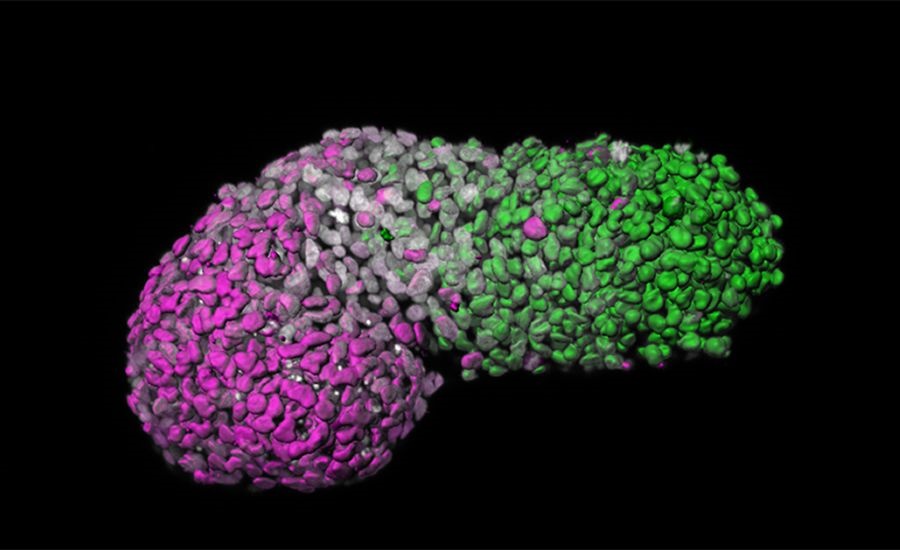- A new type of human embryo-like model has been developed by researchers using stem cells that overcome ethical restrictions on embryo research
- The model will show a process called gastrulation that is the blueprint of the human body
- It can help scientists study birth defects and other diseases to create tests for pregnant women
Researchers from the University of Cambridge in the UK and the Hubrecht Institute in the Netherlands have found a way to study a never-before-seen process that shows how human bodies develop in the womb, according to their research published in Nature.
Creating a 3D human embryo-like model from stem cells – normally donated from leftover eggs at in vitro clinics – packed tightly to form aggregates, can show what happens in human development when an embryo is between 18 and 21 days old.
Gastrulation normally takes place during this time – this is when three layers come together to create the blueprint for our body. The ectoderm makes the nervous system, mesoderm the muscles, and endoderm the gut.
Called gastruloids, these models, however, do not contain any brain cells and tissue needed to be transplanted into a womb, and can therefore never develop into a proper embryo. Scientists get to observe the process for 72 hours.
READ: Uterus 'scratching' technique won't boost success in fertility treatment
Image analysis of human gastruloid showing ‘anteroposterior’ patterning. Green is the posterior part, similar to the tail-end of an embryo; magenta is the anterior part, similar to developing heart cells; grey marks DNA. (Image: Naomi Moris, University of Cambridge)
Why it is important
Firstly, this new model circumvents an ethical issue with embryo research practised worldwide – an embryo is not allowed to be developed beyond 14 days before gastrulation occurs due to moral debates over the status of the embryo.
However, the gastruloids don’t have the capacity to become full embryos, thus nullifying that issue.
And the reason scientists want to see the gastrulation period is that this is normally when genetic defects and other diseases develop.
Before, gastrulation was speculated from using the embryos of mice and zebrafish, but this can have a negative impact on medicine developed from non-human models.
This extra layer of study could also help develop tests for pregnant women, as well as investigate the causes of infertility and miscarriages.
LISTEN: Me and my unplanned pregnancy
72-hour human gastruloid at high magnification, imaged using Scanning Electron Microscopy (Image: SEM, K Muller, University of Cambridge).
“This is a hugely exciting new model system, which will allow us to reveal and probe the processes of early human embryonic development in the lab for the first time,” said Dr Naomi Moris from the University of Cambridge’s Department of Genetics in a press release, and first author of the study.
“Our system is a first step towards modelling the emergence of the human body plan, and could prove useful for studying what happens when things go wrong, such as in birth defects.”
READ: Smoking while pregnant may weaken baby's bones
A growing human gastruloid at 24 hours (left), 48 hours (middle) and 72 hours (right). Blue marks DNA, magenta marks neural cells, green marks mesodermal cells. (Image: Naomi Moris, University of Cambridge)
Image credit: Supplied, University of Cambridge




 Publications
Publications
 Partners
Partners

















